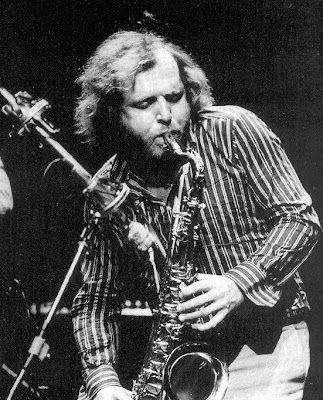Though an American form, jazz, of course, does have practitioners outside the United States. France, especially, has embraced jazz since its earliest days; it can be said that it all began there with Django Reinhardt in the thirties. Ending France's isolation during World War II, the American troops arrived in 1944, and the first bebop records were not long in following. For more than fifteen years there was no safe haven outside of bebop or New Orleans orthodoxy. Such rare exceptions as Martial Solal or Andre Hodeir only proved the rule.
 |
| Django Reinhardt |
 |
| Mike Westbrook |
Throughout Europe, those rare big bands that were still active abandoned formal dress for blue jeans and left their platforms to mix with each other in an informal alignment that sometimes moved into a fanfare to the audience.
 |
| Willem Breuker |
____________________
True jazz are in Europe now
ReplyDelete